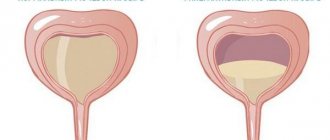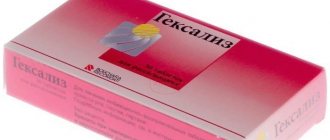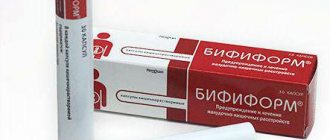Composition (active ingredient), release form
"Zodak" can be seen in different versions according to the structure of the drug.
There are three different forms of antiallergic drugs available on the pharmaceutical market:
- coated tablets;
- drops for oral use;
- syrup.
The active ingredient is the same for everyone - Cetirizine, only its percentage differs:
- in one pill - 10 mg;
- in one teaspoon of syrup - 5 mg;
- 1 ml solution for drops - 10 mg.
In addition, all forms, except for the main component, have auxiliary components, for example, the syrup also contains sorbitol syrup, which gives the drug a sweet taste, and banana flavoring.
Different versions of the drug allow you to choose a convenient form for treatment. For adult patients with allergies, tablets that can be carried with you and taken when needed are more suitable. And for children it is more practical to use the form of drops or sweet banana syrup.
The tablets are oblong, slightly convex in shape, covered with a white coating, and have a stripe for separation. In a package - 5, 10, 30, 60 or 90 pieces.
Transparent or light yellow drops are poured into 20 ml dark glass bottles. For dosing, the package contains a dropper.
The clear or yellowish syrup is packaged in 100 mm glass bottles and comes with a measuring spoon.
Composition of the drug
The medication is colorless or light yellow. A second generation antiallergic medication with a prolonged effect was registered on July 1, 2005. It contains one active ingredient called cetirizine dihydrochloride. The active ingredient is an H1-histamine blocker.
This form of the medicine contains 20 ml of cetirizine. 1 ml contains 10 mg of active substance, which equals 20 drops. In addition to the main active component, the drug contains propylene glycol, glycerol, purified water, methyl parahydroxybenzoate and propyl parahydroxybenzoate. The medicine also contains sodium acetate trihydrate, glacial acetic acid, and sodium saccharinate dihydrate.
Information! The antiallergic drug is available in cardboard packages without a prescription.
Mechanism of action of the product and indications for use
The active substance of Zodak drops belongs to the group of competitive histamine antagonists. It has almost no anticholinergic effect, that is, it does not reduce the ability of brain cells to transmit nerve signals. Also, the drug does not affect the blocking of 5-HT M2 (S M2) receptors; Zodak has virtually no antiserotonin effect.
- The drug has an antiallergic effect, preventing the occurrence and alleviating the course of the disease.
- The therapeutic effect of the drug is an antipruritic and anti-inflammatory effect.
- The medication prevents the migration of inflammatory cells and inhibits the release of mediators that are involved in the inflammatory process.
The drug reduces capillary permeability and relieves spasms. Indications for use of the medicine: the medicine is prescribed for hay fever, itchy allergic dermatoses, rhinitis (runny nose caused by allergies), conjunctivitis, urticaria and Quincke's edema.
Important! Instructions for use for children indicate that the medication is approved for use in children aged 1 year and older.
Pharmacological properties and indications for use
A special feature of cetirizine is its ability to suppress the harmful effects of histamine at an early stage, which makes it possible to effectively eliminate the signs of allergies. From 20 to 40 minutes after application, the result is visible, which lasts throughout the day.
Many people also choose this drug because drowsiness and weakness after its use are rare.
Main properties of the active component:
- eliminating itching
- antihistamine effect;
- prevention of reactions to allergens;
- elimination of spasms (muscles, bronchi);
- blocking eosinophils;
- strengthening capillaries;
- elimination of swelling;
- improvement of skin condition.
The drug is eliminated from the body within two days. The antiallergic effect is observed 72 hours after administration.
Doctors, based on these properties, prescribe the drug in the following cases:
- hay fever (hay fever) - a reaction to the flowering of certain plants;
- allergic rhinitis;
- seasonal or chronic allergies;
- dermatosis with itching;
- swelling of the nasal mucosa and bronchi;
- allergic inflammation of the eyes;
- urticaria of various types;
- sneezing;
- itching with chickenpox;
- cough;
- Quincke's edema;
- before immunization to prevent possible dermatological reactions to the vaccine.
Features of Zodak
The drug has several main characteristics that distinguish this drug from many other analogues.
- Helps relieve allergy syndromes of any origin.
- A child who is often vaccinated in the first years of life can avoid allergic reactions to vaccinations when taking the drug.
- Many mothers also like Zodak because it can be given to children, regardless of the time of eating.
- It works for a long time – up to twenty-four hours.
- The medicine has a quick effect - it begins to have a positive effect on the body immediately after administration within a few minutes.
- Depending on the form of the medicine, it can be given to children over the age of one year.
- Helps alleviate various forms of dermatitis.
Instructions for use of Zodak for adults and children
The use of the medication must begin with a careful study of the information on the package insert. Different forms of the drug have their own rules for use, since in each individual case the dosage will be different.
In addition, when choosing Zodak for children, you need to take into account age criteria:
- from 1 year - it is recommended to use drops and syrup;
- From 6 years old - it is allowed to take pills.
If it is indicated that the daily dose does not need to be divided into parts, then it is better to take the medicine before bed to minimize undesirable effects on the body. For twice daily use, it is recommended to take the drug in the morning (up to 9 o’clock) and in the evening (about 21 o’clock) so that the interval between doses is the same.
Zodak drops for allergies
When calculating the dosage of the solution, you need to know that 1 ml is 20 drops containing 10 mg of cetirizine.
To increase efficiency, it is recommended to add the drops to a glass of water or other non-carbonated liquid. Taking the drug does not depend on food intake.
Daily rate:
- 1 - 2 years - 5 drops in two doses;
- 2 - 6 years - 10 drops in 2 doses or once;
- 6 - 12 years - 20 drops once or in two doses;
- over 12 years old - 20 drops once a day.
The drop form is suitable for patients with diabetes because it does not contain sucrose.
Zodak in tablets
We must remember that pills can be given to children over 6 years of age. After all, Zodak tablets cannot be crushed or chewed, only swallowed whole and washed down with a sufficient amount of still water. And it’s quite difficult for kids to do this.
One dose of tablet form contains 10 mg of active substance.
The daily dosage depends on age:
- 6 - 12 years - 1 tablet once or 1/2 of the drug in two doses;
- over 12 years old - 1 tablet once a day.
The use of the drug does not depend on food intake, but for better absorption it is recommended to take the tablets 1 hour before a meal or 2 hours after it.
Syrup
Convenient for use in childhood is the drug in the form of syrup. It is sweet, so kids drink this medicine with pleasure.
The drug should be taken an hour before meals, and be sure to wash it down with water. Before pouring the syrup into the measuring spoon, shake the bottle thoroughly to mix the contents.
The standard dosage is as follows:
- children 1 - 2 years old - 5 ml (1 measuring spoon) divided into 2 doses;
- from 2 to 6 years - 5 ml once or in 2 doses;
- 6 - 12 years - 10 ml once or 1 measuring spoon 2 times a day;
- over 12 years - 10 ml at a time.
The exact dosage is indicated by the attending physician, taking into account the patient’s condition. The instructions indicate the standard regimen for using the drug.
The duration of therapy depends on the symptoms. There are even situations when, long before the end of the prescribed course of therapy, the signs of allergy disappear, and then the doctor decides to discontinue the drug.
Zodak instructions, price in pharmacies for Zodak – Pharmacy 911
Zodak tablets
Active substance: cetirizine dihydrochloride. Inactive ingredients: corn starch, lactose monohydrate, povidone, hydroxypropyl methylcellulose, titanium dioxide, talc, magnesium stearate, macrogol, dimethicone emulsion.
Zodak-drops
Active substance: cetirizine. Inactive substances: propylparaben, methylparaben, glycerol 85%, sodium acetate, sodium saccharin, acetic acid, propylene glycol, purified water.
Zodak syrup
Active substance: cetirizine dihydrochloride. Inactive ingredients: propylparaben, methylparaben, propylene glycol, glycerol 85%, sorbitol syrup, sodium acetate, sodium saccharin, banana flavor, acetic acid, purified water.
Zodak tablets – 10 mg, 5 doses; 10; thirty; 60; 90 pieces in blister pack. The tablets are white, oblong, biconvex, scored on one side.
Zodak drops for internal use – 10 mg in 1 ml, in 20 ml bottles. The drops are transparent, without color or with a slight yellow tint.
Zodak syrup – 5 mg/ml, 100 ml bottle.
The syrup is transparent, without color or with a slight yellow tint. Has a characteristic banana smell.
Pharmachologic effect:
Zodak is a 2nd generation antiallergic drug with a prolonged effect. The active ingredient of the drug is cetirizine dihydrochloride, a selective blocker of peripheral H1 receptors. Does not have significant antiserotonin and anticholinergic effects.
When used in therapeutic doses, Zodak does not cause sedation, including drowsiness. The active substance of Zodak affects the histamine-dependent - early phase of allergic reactions, as well as the late cellular phase.
Under the influence of cetirizine, the release of histamine from basophils and mast cells is inhibited, and the migration of eosinophils and other cells is reduced. When taking 5–60 mg of cetirizine, linear kinetics are observed. The total volume of distribution is 0.50 l/kg.
The half-life of the active substance is 10 hours. The amount of absorption is not affected by food intake, but the rate of absorption of cetirizine is reduced. There was no accumulation effect when taking a dose of 10 mg every day for 10 days.
The maximum concentration in blood plasma after reaching equilibrium concentration is 300 ng/ml, which is achieved after 60±30 minutes. 93±0.3% of cetirizine is bound by blood proteins.
It has no effect on the binding of warfarin to plasma proteins. It does not undergo active metabolic transformation during the initial passage through the liver. Approximately 2/3 of cetirizine is excreted unchanged in the urine.
A study on volunteers revealed the absence of pharmacokinetic differences in both AUC and maximum concentration values. No differences in pharmacokinetic parameters were observed in adults of different racial backgrounds.
The bioavailability of the active substance is the same for all dosage forms of the drug: syrup, drops and tablets.
Indications for use:
· Therapy of itching and urticaria of various origins, including urticaria accompanied by fever (chronic idiopathic urticaria); · symptomatic treatment of allergic seasonal rhinitis and year-round allergic rhinitis;
· symptomatic treatment of allergic conjunctivitis.
Mode of application:
Zodak tablets
The tablet is taken with water, regardless of food. Do not chew! For adults and children over 12 years of age – 10 mg/day (1 tablet) in 1 dose. In pediatrics: children from 6 to 12 years old - 5 mg / day (1/2 tablet) 2 times / day, 10 mg of Zodak can be taken once a day.
Zodak-drops
For adults and children over 12 years old – 10 mg (20 drops) 1 time per day. 1 ml of the drug contains 20 drops. In pediatrics: from the first days of life to 2 years – 5 drops (2.5 mg) 2 times / day; from 2 to 6 years – 5 drops (2.5 mg of cetirizine) 2 times / day, 10 drops (5 mg) can be used
1 r/day; from 6 to 12 years - 10 drops (5 mg) 2 times / day, you can take 20 drops (10 mg) 1 time / day.
Zodak syrup
For adults and children over 12 years old – 10 mg (2 scoops) 1 time per day. 1 measuring spoon contains 5 ml of Zodak syrup. The spoon is equipped with divisions: ¼ – corresponds to 1.25 ml of syrup and ½ – 2.5 ml.
In pediatrics: from 1 to 2 years – 2.5 mg (half a measuring spoon) 2 times / day; from 2 to 6 years - 2.5 mg (half a measuring spoon) 2 times / day, you can take 5 mg (1 measuring spoon) 1 time / day; from 6 to 12 years – 5 mg (1 measuring spoon) 2 times / day, you can take 10 mg (2 measuring spoons) 1 time / day.
Treatment of elderly patients
In the case of normally functioning kidneys, there is no need to reduce the dosage.
Treatment of patients with impaired renal function
In case of moderate or severe impairment of renal function, individual intervals for taking Zodak should be established, which depends on the severity of renal failure: for minor impairment (creatinine clearance - 50–79 ml/min) - there is no need for dose adjustment and changing the interval between doses; for mild disorders (creatinine clearance 30–49 ml/min) – 5 mg/day as usual; for severe disorders (creatinine clearance ≤ 30 ml/min) – 10 mg 1 time per day after 2 days; in the terminal stage, if there are contraindications to hemodialysis (creatinine clearance ≤ 10 ml/min), the use of Zodak is contraindicated. The dose of cetirizine for children with renal insufficiency is calculated individually, based on body weight and creatinine clearance level.
Treatment of patients with liver dysfunction
There is no need to reduce the dosage.
Side effects:
Unlike antihistamines of previous generations, which belong to the group of H1 receptor antagonists, the active substance of Zodak penetrates the blood-brain barrier in small quantities, so the development of a sedative effect is not expressed or expressed to a very mild degree. Although cetirizine acts selectively on peripheral H1 receptors, the anticholinergic effect is weak, but there have been reports of ocular accommodation disturbances, difficulty urinating, paradoxical stimulation of the central nervous system and a feeling of dry mouth.
From the central and peripheral nervous system: fatigue, drowsiness, dizziness and headache; paradoxical stimulation of the nervous system - in isolated cases. From the hepatobiliary system: an increase in the content of bilirubin and the activity of liver enzymes (these side effects are transient and disappeared after discontinuation of the drug).
Contraindications:
Common to all dosage forms: · hypersensitivity to hydroxyzine or cetirizine in your life history or to any other ingredients of Zodak; · During pregnancy and breastfeeding;
· renal failure with creatinine clearance less than 10 ml/min.
For tablets – age up to 6 years. For syrup – age up to 1 year.
Pregnancy:
Zodak is contraindicated during pregnancy in all trimesters. If Zodak is prescribed to a nursing mother, breastfeeding should be temporarily stopped.
Interaction with other drugs:
Studies of the pharmacokinetic parameters of the interaction of cetirizine with cimetidine, pseudoephedrine, ketoconazole, azithromycin and erythromycin did not reveal. There is a slight decrease in the clearance of cetirizine to 16% when combined with repeated doses of theophylline at a dosage of 400 mg/day. Moreover, with this combination, the excretion of theophylline does not change.
Studies of pharmacodynamic parameters when combining cetirizine with glipizide, diazepam, azithromycin, theophylline, ketoconazole, erythromycin and pseudoephedrine did not reveal any adverse clinically significant interactions.
Thus, the combination of the drug with ketoconazole or macrolides did not cause clinically significant changes in the electrocardiographic profile. It was also found that the active substance of Zodak does not affect the ability of warfarin to bind to blood proteins.
When simultaneous ingestion of food with cetirizine, the volume of absorption does not change, but the rate of absorption decreases.
Overdose:
If the recommended dose of Zodak is exceeded, symptoms develop, mainly associated with changes in the central nervous system, and anticholinergic effects of cetirizine are also likely.
As a result of exceeding the dose by 5 times, the following symptoms of overdose have been reported: diarrhea, agitation, dizziness, nausea, fatigue, dilated pupils, headache, itching, sedation, nervousness, drowsiness, tachycardia, stupor, tremor and urinary retention. No specific antidote has been identified. In case of overdose, supportive and symptomatic therapy is used. Immediately after taking a large dose, gastric lavage is recommended.
Hemodialysis is not effective because cetirizine is mostly bound to blood proteins.
Use during pregnancy and breastfeeding
Women during a special period should read the instructions very carefully before using any medicine. What is the situation with the antihistamine, how does it affect expectant mothers?
The effect of cetirizine on the body of pregnant women has not been studied, so there is no data regarding the safety of the drug.
The manufacturer conducted studies on animals, as a result of which no special deviations in fetal development were observed.
But still, like any antihistamines, Zodak penetrates the blood, which means it reaches the embryo, which entails certain risks for the unborn child. Therefore, the use of the drug during pregnancy is prohibited.
There are cases where, for severe allergic diseases in the second trimester, women were prescribed the drug under discussion.
Nursing mothers should avoid such treatment, since Cetirizine actively passes into breast milk and affects the baby.
Drug interactions with other drugs
The instructions indicate several features of using cetirizine along with other medications and substances. Basically, the drug has good compatibility.
- Theophylline and pseudoephedrine reduce the rate of absorption of the drug in the stomach.
- Concomitant use with ritonavir reduces its effectiveness.
- Ethanol in medications reduces concentration, and Zodak has the same side effects. Therefore, during the treatment period, combining such drugs, as well as drinking drinks containing alcohol, is not recommended.
An important point: consuming cetirizine with food slightly slows down the effect of the drug.
Contraindications, side effects and overdose
Since the drug belongs to the second generation of drugs, it is safer. But still, there are certain contraindications for the use of Zodak in various forms, which should be taken into account to avoid unpleasant side effects.
Among them:
- special sensitivity to components, intolerance to cetirizine, galactose;
- pathological decrease in kidney function;
- lactation period;
- liver failure;
- pregnancy;
- cough of non-allergic origin;
- bronchospasm;
- diabetes mellitus in the acute period;
- chronic central nervous system disorders;
- pathologies of pigment metabolism;
- children up to 1 year (for drops, syrup), up to 6 years (for tablets).
When using the product, adverse reactions occur quite rarely (1 - 2%).
The most common ones listed in the instructions are:
- urge to vomit;
- dry mouth;
- increased fatigue;
- drowsiness;
- inflammation of the nasal mucosa;
- sudden changes in body weight;
- stomach and intestinal disorders;
- visual disturbances, eye pain;
- dermatological rash, burning sensation;
- swelling;
- headache;
- decreased appetite;
- bleeding in the rectum;
- malfunction of taste buds;
- decreased attention;
- depressive states;
- deviations in the functioning of the genitourinary system;
- menstrual cycle disorders in women;
- decreased libido.
If side effects occur, it is not at all necessary to discontinue the drug; the dose may need to be adjusted after consultation with a doctor.
An overdose occurs when the recommended dose is exceeded by 5 times. Such cases have been recorded only a few times.
Symptoms of this condition are:
- general weakness;
- dizziness;
- confusion;
- intestinal disorders;
- acute headache;
- constant desire to sleep;
- itching;
- inhibition of reactions;
- tremor of the limbs;
- heart rhythm disturbances;
- problems with urination.
In case of overdose, you should seek medical help. Treatment consists of gastric lavage and the use of activated charcoal.
Contraindications
Before using Zodak, you should definitely study the clause in the instructions about contraindications.
Main contraindications for use for all forms of release:
- Individual intolerance to the active ingredient - cetirizine;
- Pathological disorders with kidney damage;
- Genetic galactose intolerance;
- Breastfeeding period;
- Any trimester of pregnancy.
- Severe cough or bronchospasms in a patient - using Zodak as a medicine can cause shortness of breath;
- Disorders of pigment metabolism in the body;
- Chronic nervous diseases;
- Complicated stages of diabetes mellitus.











